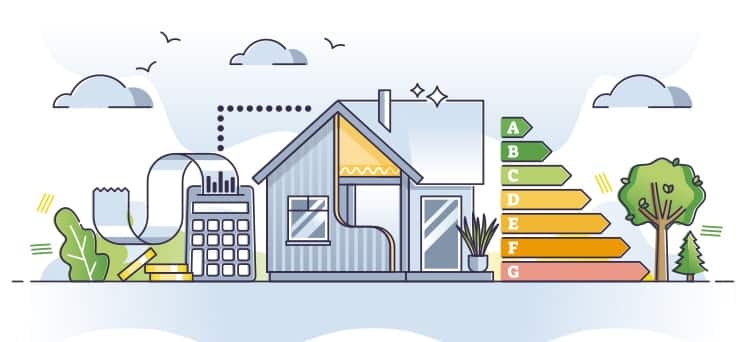Home building has come a long way in the last decade, with new technologies and standards emerging that have changed the way homes are built. One of the most important of these changes is the implementation of Standard Assessment Procedures (SAP) calculations. This form of assessment evaluates a home’s energy efficiency and helps guide builders in making sure their homes meet certain standards. Let’s take a closer look at what SAP calculations are and why they are so important for future home building.
What is SAP calculation?
SAP calculation involves an assessment of how much energy a property needs for space heating, water heating, lighting, ventilation, and other uses. This evaluation provides an indication of how energy efficient the property is compared to other homes built to similar standards. It also provides an estimate of how much carbon dioxide will be emitted from the home over its lifetime.
Five reasons why SAP calculation is important for future home building.
1. Responding to government regulations.
To adhere to the current regulations set by the UK government, homeowners must ensure that their homes meet certain standards in terms of energy efficiency. This is where SAP calculations come into play – they help homeowners understand what they need to do to comply with these regulations.
2. Lower utility bills.
Understanding how SAP calculation works will enable homeowners to make their homes more energy efficient by reducing their reliance on utilities like electricity, gas, and water. This can ultimately lead to lower utility bills, as well as a reduced carbon footprint.
3. Improved comfort levels.
An energy-efficient home means better insulation, which can lead to improved comfort levels within your home all year round. With proper insulation and the right temperature settings on your heating system, you won’t have to worry about cold drafts or excessive heat during the summer months.
4. Increase your home’s value.
An energy-efficient home means your property value could increase over time due to its low running costs and potential savings on utility bills compared with other properties on the market that may not have been built with such efficiency in mind.
5. A healthier home environment.
Energy-efficient homes are healthier environments because they reduce airborne pollutants like mould spores and dust mites, which can cause allergies and respiratory illnesses if left unchecked over time. With reduced humidity levels, these pollutants become less of an issue in a properly insulated home equipped with an efficient heating system that allows you to control temperatures effectively without wasting too much energy unnecessarily throughout the year.
Follow us for more compelling SAP calculation blogs!
If you’re interested in reading more of our energy audit blogs, be sure to check out another one of our blogs here: Knowing SAP Calculations And Their Benefits.
If you liked this blog, be sure to follow us on Facebook and Twitter so that we can keep you updated on our latest posts.
Get started with your energy-efficiency journey with Briary Energy!
The future of your business is in your hands.
Take control and get started on your energy-efficiency journey today by contacting us at Briary Energy. We can help you reduce your energy consumption, increase your profitability, and become more environmentally friendly with our end-to-end solutions.
Let us show you how easy it is here at Briary Energy! Call us today at 0330 223 6960 for expert advice on energy efficiency!
Conduct a SAP calculation now with Briary Energy!
For over 15 years, we have helped developers achieve energy-efficient properties.
We offer an in-depth SAP audit that reviews the building envelope, insulation and air tightness, mechanical systems and electrical systems to ensure compliance with the regulations. We also conduct full SAP calculations to ensure that all building components are accounted for in the calculation.
Everything you need to know about SAP calculations.
What does SAP calculation mean?
SAP calculation stands for Standard Assessment Procedure and is a method used by the UK government to determine how energy efficient a building is. In short, it measures the yearly carbon dioxide emissions of a building and assigns it an Energy Efficiency Rating (EER). This rating can then be used to compare buildings with one another to understand which will use more or less energy when living or working within them.
What is a good SAP calculation score?
The exact requirements vary depending on the type of building and local climate zone. But generally, the higher your SAP rating, the more energy efficient your building is. A rough guide of the scoring can be seen below:
Excellent – A score above 85 can be seen as ‘excellent’ with very little room for improvement.
Good – Between 75-85 is considered ‘good’, but may still need some upgrades before reaching optimal efficiency.
Fair – 50-74 is considered ‘fair’, where basic thermal improvements may be able to increase performance significantly.
Poor – Anything below 50 needs urgent attention before it meets even basic regulations.
How long do SAP calculations take?
The duration of a Standard Assessment Procedure (SAP) calculation can vary depending on the scope of the assessment and the level of detail required but typically can take anywhere from a couple of hours to several days. The speed at which calculations are completed will depend upon how many items require assessing, how complex each item is and how much detail needs to be included in the final report.
How do I improve my SAP calculation?
The first step in improving your SAP calculation is understanding what it is, how it works, and what factors can affect the results. Once you understand why each factor affects energy efficiency, then it becomes easier to work on ways to improve your rating.
Why do we use SAP calculations?
The purpose of SAP calculations is to ensure that all new dwellings built in England, Wales and Northern Ireland meet their minimum target emissions standards by measuring their overall energy-efficiency rating. This information can then be used to help inform any improvement works required for a building before it can be deemed compliant with current regulations.


